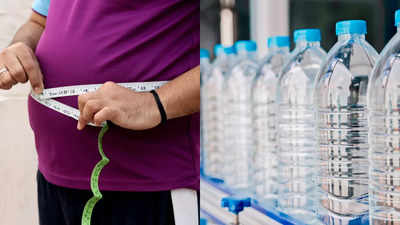The recent news report about the presence of microplastics in salt and sugar has once again raised eyebrows on how safe is our food? The study, “Microplastics in Salt and Sugar” and conducted by the environmental research organisation Toxics Link, tested 10 types of salt — including table salt, rock salt, sea salt and local raw salt — and five types of sugar purchased from both online and local markets. In the study it is revealed that microplastics are present in all salt and sugar samples, in various forms including fibre, pellets, films and fragments. The size of these microplastics ranged from 0.
1 mm to 5 mm. And, the highest levels of microplastics were found in iodised salt, in the form of multi-coloured thin fibre and films. While this is surely a concern, as per a news report by Forbes, every liter of bottled water contains at least 240,000 microplastic particles.

They’re not just in plastic bottles and containers. They also arise from plastic cutting boards, Teflon cookware, fabrics and beauty products. According to the National Institutes of Health, microplastics are present in everything from the sea salt on our tables to the tap water we drink and even the dust that settles in our homes.
Also Read: Every salt and sugar brand in India has microplastics What are the side effects As per emerging studies, these microplastics may significantly impact human health and act as endocrine disruptors, altering hormonal signaling and potentially leading to weight gain and other health issues. What is Xenoestrgens It is said that Microplastics can act like xenoestrogens, chemicals that mimic estrogen by binding to estrogen receptors in the body. This can disrupt the hormonal balance in children, leading to early puberty and weight gain.
According to a study published in 2021 by researchers at the University of Naples Parthenope in Italy, it can also lead to health issues in adult men including weight gain, erectile dysfunction, gynecomastia, reduced sex drive, decreased energy, decreased muscle mass and infertility as well. The major source of exposure to microplastic Drinking from plastic water bottles and microwaving food in plastic containers are two of the most significant ways these particles enter our bodies. When plastic is heated, it releases microplastics and other chemicals into the food or drink it contains, which we then ingest.
Also Read: FSSAI takes action on microplastic contamination in food What's the solution? The key solution is to install water filters designed to remove microplastics from your tap water. Also, it is suggested to avoid plastic bottles and opt for glass or stainless steel bottles for beverages. Lastly, use of glass or ceramic containers for storing and microwaving food is advisable.
Thumb and Embed Images Courtesy: istock.



















